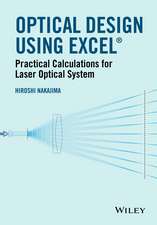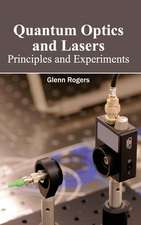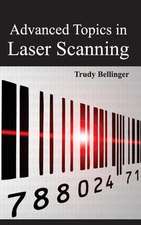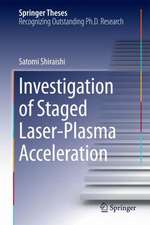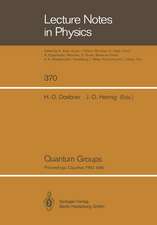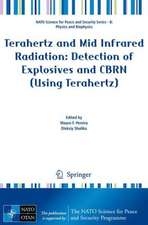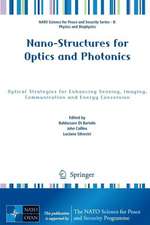Atoms in Plasmas: Springer Series on Atomic, Optical, and Plasma Physics, cartea 14
Autor Valery S. Lisitsaen Limba Engleză Paperback – 13 dec 2011
Din seria Springer Series on Atomic, Optical, and Plasma Physics
- 18%
 Preț: 1007.65 lei
Preț: 1007.65 lei - 18%
 Preț: 942.63 lei
Preț: 942.63 lei - 24%
 Preț: 833.23 lei
Preț: 833.23 lei - 15%
 Preț: 641.20 lei
Preț: 641.20 lei -
 Preț: 384.86 lei
Preț: 384.86 lei - 24%
 Preț: 810.76 lei
Preț: 810.76 lei - 18%
 Preț: 786.04 lei
Preț: 786.04 lei - 18%
 Preț: 793.94 lei
Preț: 793.94 lei - 15%
 Preț: 649.54 lei
Preț: 649.54 lei - 18%
 Preț: 1023.11 lei
Preț: 1023.11 lei - 18%
 Preț: 1006.87 lei
Preț: 1006.87 lei - 18%
 Preț: 1117.03 lei
Preț: 1117.03 lei - 15%
 Preț: 642.36 lei
Preț: 642.36 lei - 18%
 Preț: 998.82 lei
Preț: 998.82 lei - 18%
 Preț: 781.77 lei
Preț: 781.77 lei -
 Preț: 382.75 lei
Preț: 382.75 lei - 15%
 Preț: 650.37 lei
Preț: 650.37 lei - 18%
 Preț: 792.03 lei
Preț: 792.03 lei - 24%
 Preț: 975.66 lei
Preț: 975.66 lei - 24%
 Preț: 790.67 lei
Preț: 790.67 lei - 18%
 Preț: 945.79 lei
Preț: 945.79 lei - 18%
 Preț: 999.76 lei
Preț: 999.76 lei - 18%
 Preț: 883.90 lei
Preț: 883.90 lei - 18%
 Preț: 784.92 lei
Preț: 784.92 lei - 18%
 Preț: 1006.06 lei
Preț: 1006.06 lei - 18%
 Preț: 882.19 lei
Preț: 882.19 lei - 18%
 Preț: 955.88 lei
Preț: 955.88 lei - 18%
 Preț: 748.77 lei
Preț: 748.77 lei - 18%
 Preț: 1015.23 lei
Preț: 1015.23 lei - 15%
 Preț: 582.12 lei
Preț: 582.12 lei -
 Preț: 390.25 lei
Preț: 390.25 lei - 18%
 Preț: 945.79 lei
Preț: 945.79 lei -
 Preț: 384.48 lei
Preț: 384.48 lei
Preț: 389.49 lei
Nou
Puncte Express: 584
Preț estimativ în valută:
74.53€ • 79.70$ • 62.14£
74.53€ • 79.70$ • 62.14£
Carte tipărită la comandă
Livrare economică 17 aprilie-01 mai
Preluare comenzi: 021 569.72.76
Specificații
ISBN-13: 9783642787287
ISBN-10: 3642787282
Pagini: 320
Ilustrații: XI, 302 p.
Dimensiuni: 155 x 235 x 17 mm
Greutate: 0.45 kg
Ediția:Softcover reprint of the original 1st ed. 1994
Editura: Springer Berlin, Heidelberg
Colecția Springer
Seria Springer Series on Atomic, Optical, and Plasma Physics
Locul publicării:Berlin, Heidelberg, Germany
ISBN-10: 3642787282
Pagini: 320
Ilustrații: XI, 302 p.
Dimensiuni: 155 x 235 x 17 mm
Greutate: 0.45 kg
Ediția:Softcover reprint of the original 1st ed. 1994
Editura: Springer Berlin, Heidelberg
Colecția Springer
Seria Springer Series on Atomic, Optical, and Plasma Physics
Locul publicării:Berlin, Heidelberg, Germany
Public țintă
ResearchCuprins
1. Introduction. General Problems of Description of Atomic Spectra in Plasmas.- 1.1 Atomic Physics and Plasma Physics. Quasiclassical Methods for Atomic Processes.- 1.2 General Problems of Atomic-State Mixing in a Plasma Medium. Density Matrix Method.- 2. Classical Motion in an Atomic Potential. Atomic Structure.- 2.1 Classical Radiation Spectra in a Coulomb Field. Peculiarities of the High-Frequency Domain. Kramers’ Electrodynamics.- 2.2 Symmetry Properties of the Coulomb Field.- 2.3 Nonhydrogenic Atoms. Allowed and Forbidden Transitions. Properties of Multicharged Ion Spectra.- 2.3.1 Nonhydrogenic Atomic Spectra Structure. Allowed and Forbidden Transitions.- 2.3.2 Properties of Multicharged Ions (MCI) Spectra.- 2.4 Auto-ionization States. Stationary (Fano) and Time-Dependent (Kompaneets) Descriptions.- 2.4.1 Auto-ionization States.- 2.4.2 The Interaction of Discrete States with a Continuum. Fano and Kompaneets Descriptions.- 2.5 Rydberg Atomic States in Plasmas.- 3. Radiation Itansition Probabilities and Radiation Kinetics in Kramers’ Electrodynamics.- 3.1 Quasiclassical Transition Probabilities.- 3.2 Line Radiation (LR) Probabilities.- 3.3 Photorecombination (PR) Cross Section.- 3.4 Kramers’ Electrodynamics and Radiative Cascades Between Rydberg Atomic States.- 3.4.1 Classical Kinetic Equation.- 3.4.2 Quantum Kinetic Equation in the Quasiclassical Approximation.- 3.4.3 Relationship of the Quasiclassical Solution to the Quantum Cascade Matrix. The Solution in the General Quantum Case.- 3.4.4 Atomic-Level Populations for a Photorecombinative Source. Quasiclassical Scaling Laws.- 4. Fermi Method of Equivalent Photons and the Probabilities of Radiative-Collisional Transitions in Atoms.- 4.1 Applicability of the Fermi Method.- 4.2 Excitation by Electron Impact asAbsorption of Equivalent Photons by an Ion.- 4.3 Dielectronic Recombination as the Resonance Fluorescence of Equivalent Photons.- 4.4 Polarization Radiation as Non-Resonant Scattering of Equivalent Photons.- 5. Hydrogenic Atom in an Electric Field. Quasiclassical Consideration.- 5.1 Quasiclassical Results for the Transition Probabilities and Lifetimes in Parabolic Coordinates.- 5.1.1 Introductory Comments.- 5.1.2 General Relationships.- 5.1.3 Radiative Lifetimes of States.- 5.2 Intensities of the Stark Components.- 5.3 Weak Fields. Asymptotic Theory of the Decay of an Atom.- 5.4 Classical Theory of the Decay of an Atom in an Electric Field.- 5.5 Decay of States Near the Critical Value of an Electric Field.- 5.6 General Theory of Atomic States in an Electric Field.- 5.6.1 Basis of the Semiclassical Approach.- 5.6.2 Energy Levels.- 5.6.3 Decay Rates.- 5.7 Results of Numerical Calculations.- 6. Atom in a Magnetic Field and Crossed F—B Fields.- 6.1 Introductory Remarks. Energy Spectrum of Low Lying Atomic States.- 6.1.1 Energy Spectrum of Lower States.- 6.2 Adiabatic Theory for Highly Excited Atomic States in a Strong Magnetic Field.- 6.3 “Latent” Symmetry of an Atom in a Magnetic Field.- 6.4 Oscillator Strengths of Atomic Transitions in Strong Magnetic Fields.- 6.5 Classical Trajectories of an Atomic Electron in a Magnetic Field. Stochastization Effects.- 6.5.1 Calculation of Classical Trajectories.- 6.5.2 Stochastization of Electron Motion in Coulomb and Magnetic Fields.- 6.5.3 Numerical Calculations of Spectra of an Atom in a Magnetic Field.- 6.6 Hydrogen Atom in Crossed Electric and Magnetic Fields.- 6.6.1 First-Order Theory.- 6.6.2 Second-Order Corrections.- 6.6.3 Atom in Electric and Strong Magnetic Fields.- 6.7 Conclusions.- 7. Atom in a NonresonantOscillating Electric Field.- 7.1 The Types of Oscillating Fields in Plasmas. Quasi-energetic Level Structure.- 7.2 The Blokhintsev Spectrum.- 7.3 Hydrogen Atom in a Rotating Electric Field.- 7.4 Multiphoton Transitions in a Two-Level System.- 7.5 The Quasi-energy Spectrum of a Two-Level System. Intensities of Satellites.- 7.6 Highly Excited Atom in a Low Frequency, Nonresonant Electric Field. Quasiclassical Solution.- 8. Atom in a Resonant Oscillating Electric Field. Simultaneous Influence of Constant and Oscillating Fields.- 8.1 Features of Resonance Conditions in Plasmas.- 8.2 Action of Weak Oscillating Electric Fields of Broad Spectral Composition on the Atom.- 8.3 Hydrogen Atom in Static (S) and Strong Oscillating (Dynamie-D) Fields. Numerical Solutions for the Case when S?D.- 8.4 Analytical Theory of Multiquantum Resonances in S — D Fields.- 8.5 Hydrogen Spectral, Line Structure Near Resonances in S — D Fields.- 8.6 On the Stochastization of Highly Excited Electron Motion in a Periodic Field.- 9. Decay of Atomic States.- 9.1 Resonance of Discrete States Against the Background of a Continuous Spectrum.- 9.1.1 A Number of Discrete States Against the Background of One Continuum.- 9.1.2 Several Continua. Scattering Problems.- 9.1.3 Two-Level Problem with a Stationary Perturbation.- 9.1.4 Certain Examples.- 9.2 Damping of Atomic States Due to Their Relaxation in Plasmas.- 9.2.1 Impact Relaxation of Atomic Levels.- 9.2.2 Features of the Spectral Line Shape Under Impact Relaxation of Atomic Sublevels in an Ion Field.- 9.3 Emission of Forbidden Spectral Lines and the Decay of Metastable Levels in Plasmas.- 9.3.1 The Polarization Mechanism for Forbidden Transitions in an Atom.- 9.3.2 Interrelation Between the Nonelastic and Polarization Mechanisms. The WeisskopfMechanism for Inelastic Transitions.- 9.3.3 The Adiabatic Approximation for Polarization Radiation.- 9.4 Decay of Atomic States and Some Elementary Processes in Plasmas.- 9.4.1 Transition Discrete Spectrum — Continuum in Hydrogenic Plasmas.- 9.4.2 Charge Exchange of Atoms at Multicharged Ions as a Decay Process.- 9.4.3 Auto-ionization Decays and Dielectronic Recombination in Plasmas.- 10. Excited Hydrogen-Like Atom in Electrical Fields of Charged Particles.- 10.1 The Atomic State Evolution in the Electric Field of a Classically Moving Charged Particle.- 10.2 Effect of the Hydrogenic State Mixing During Charge Exchange of an Atom at the Multicharged Ion.- 10.3 Quantum Motion of an Electron in an Electric Field of Hydrogen-Like Atom or Ion. Connection with the Line-Broadening Problem.- 10.3.1 Classical and Quantum Formulations of the Problem of Electron Interaction with an Excited Atom.- 10.3.2 The System of Wave Functions of an Excited Hydrogen Atom and a Broadening Particle.- 10.3.3 The Hydrogen Line Shape and the Overlap Integral of the Wave Functions of a Broadening Particle.- 10.3.4 Generalization onto the Case of Hydrogen-Like Ions.- 10.4 Differential Cross Sections for Electron and Ion Scattering at the Excited Hydrogen Atom. Precise Solutions.- 11. Collisions of an Atom with Atomic Particles in External Fields.- 11.1 Collisional Transitions Between Fine Structure Sublevels of a Hydrogen Atom in a Magnetic Field.- 11.2 Collisions of a Two-Level Atom with Particles in a Strong Resonant Electromagnetic Field.- 11.2.1 Optical Collisions. The Basic System of Equations.- 11.2.2 Optical Collisions and Characteristics of Light Absorption in Media.- 11.3 Landau-Zener Mechanism of Strong Electromagnetic (E.M.) Radiation Absorption in the Wings of a Spectral Line.- 11.3.1Landau-Zener Model for Optical Phenomena.- 11.3.2 Nonlinear Effects in Absorption for the Collision of Identical Atoms.- 11.3.3 Experimental Aspects.- 11.4 Multiparticle Effects. The Change of the Atom’s Quantization Direction in a Laser Field.- 11.4.1 Multiparticle Approach to the Powerful Radiation Absorption by the Atom in a Plasma.- 11.4.2 Calculation of Spectra in a Laser Field.- 11.4.3 The Change of the Atom Quantization Direction in a Laser Field.- 11.5 Radiative Collisions.- 11.6 Effect of the Electric Microfield on Resonant Charge Exchange in a Dense Medium.- 12. The Influence of Regular and Stochastic Accelerations on Atomic Spectra.- 12.1 Regular Acceleration. Adiabatic Population Inversion in a Strong Laser Field.- 12.1.1 Landau-Zener Nonlinearities in the Spectra of a Two-Level System Subjected to Acceleration.- 12.1.2 Adiabatic Inversion of the Populations of Atomic Levels.- 12.2 Model of Brownian Motion and Optical Phenomena. Path Integral Method.- 12.2.1 The State Amplitude Method and the Path Integration.- 12.3 Investigation of Nonlinear Effects in Absorption Due to Brownian Fluctuations of Atomic Velocity.- 12.4 An Electron in a Planck Radiation Field. “Infrared Catastrophe”.- 12.4.1 Classical Current Approximation.- 12.4.2 Multiphoton-Induced Processes in a Planck Radiation Field.- 12.4.3 Calculation of the Absorbed Energy.- References.

